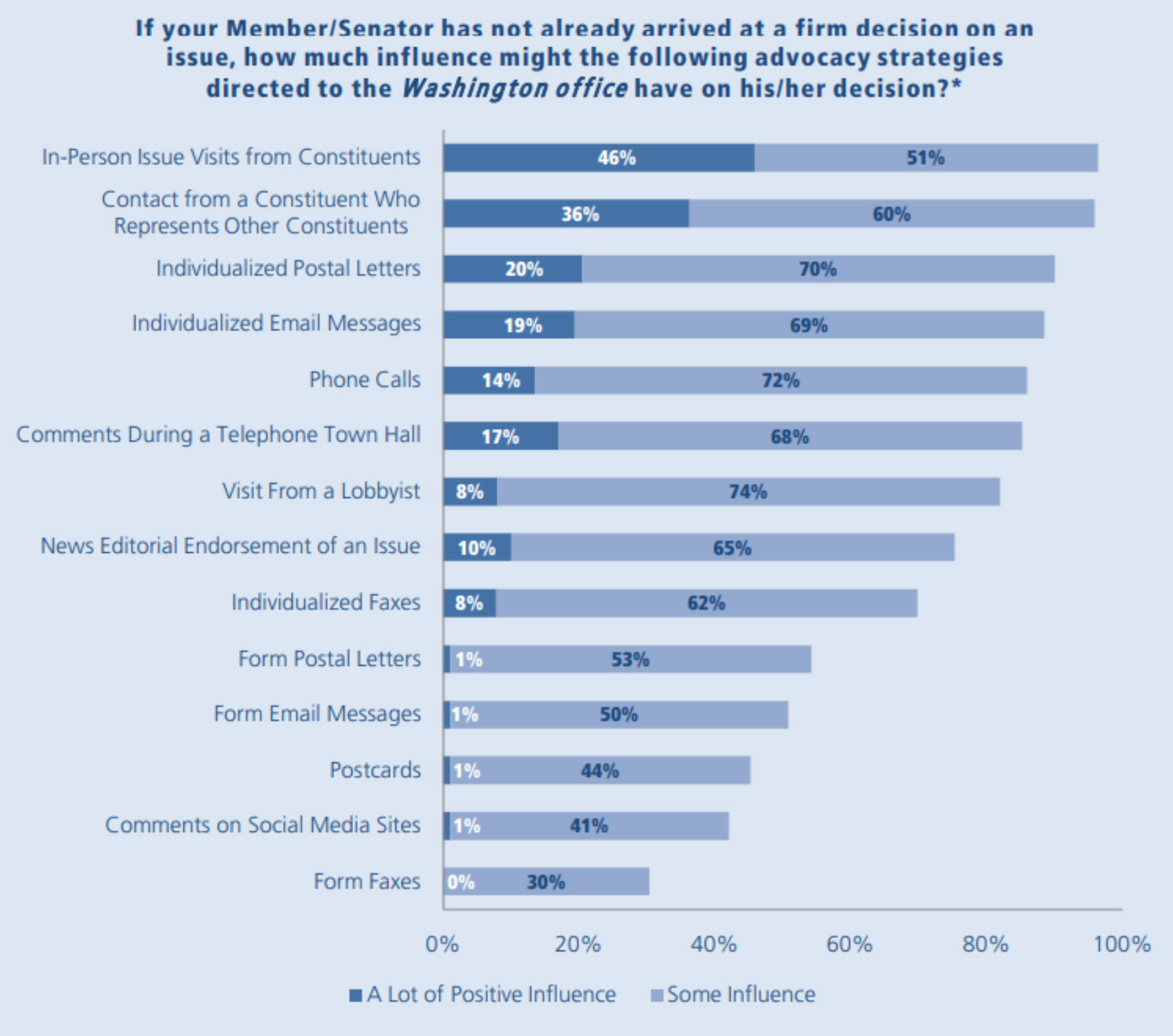Using Data to Make all Politics Local and Personalized
As Congress and state legislatures are coming back into session, elected representatives of the American people are beginning the arduous work of creating multitudes of public policies and regulations. These policies aren’t made in a vacuum, of course–policymakers are eager to hear from citizens and stakeholders about the pluses, minuses, and deltas that would make laws and regulations better.
Unfortunately, citizens and stakeholders have very little idea on how to best engage in the policymaking process. Policymakers and their staff have zero resources to outwardly solicit input, and it’s often incumbent on the general public to figure out the how/what/where/when of engaging in advocacy.
Because of this, I often reflect on a project the Congressional Management Foundation (CMF) created almost 20 years ago, called “Communicating with Congress.” The goal was to help citizens address the frustrations and barriers of increased citizen participation in the public policy process.
Starting in 2010, CMF produced a series of reports to illuminate the challenges that both sides of the communications equation face and offer ideas to improve the process. In 2011, they published “Communicating with Congress: Perceptions of Citizen Advocacy on Capitol Hill” in an effort to provide Congress, advocacy groups, and citizens a greater understanding of constituent communications on Capitol Hill.
Under the section entitled “Citizens Have More Power Than They Realize,” CMF staff clearly lay out what policymakers say is the most powerful way for citizens to advocate for their issues:
Though this report is now over a decade old, the tactical themes still ring true. Policymakers are eager for authentic, heartfelt, individualized communication from their constituents. They don’t want form letters, spam email, email petitions, robocalls, or opinions from people who live outside their districts (or even outside their states).
This can be overwhelming. Many lobbyists and advocacy professionals aren’t even sure how to begin scaling a grassroots advocacy program that comes close to what’s described above. This is where Statara’s experience and products come in.
If you work for a trade association or a membership group, your membership list is the place to start. When you work with Statara, we match your members to the correct state legislative districts or Congressional districts. This ensures that if and when you call on a member to talk to their elected representatives, they are valued constituents (rather than interlopers from somewhere else, wasting time otherwise reserved for people “back home”).
If you don’t have a membership list, but you are part of an advocacy organization, you can use Statara’s Identity Insights voter data and district profile data to find activist lists of like-minded constituents who reside in the districts of Members of Congress or state legislators you’re trying to influence. We have dozens of custom activist models to help you create an advocate audience from. Check it out here.
These lists of district-matched, issue-oriented advocates then provide you with the people you need to implement the tactics described in the CMF report. You can reach out to them and talk about:
- Opportunities to visit policymakers’ offices to discuss your issues;
- Participating in patch-thru call programs to talk to staff on the phone about how your issues affect them; and
- Hand-writing or typing personalized letters about how your issues affect them.
As we start out the new year, we at Statara want to help your team improve your membership lists or voter data for your advocacy programs, and integrate these tactics into your state or federal lobbying efforts. Contact us today to get started.

